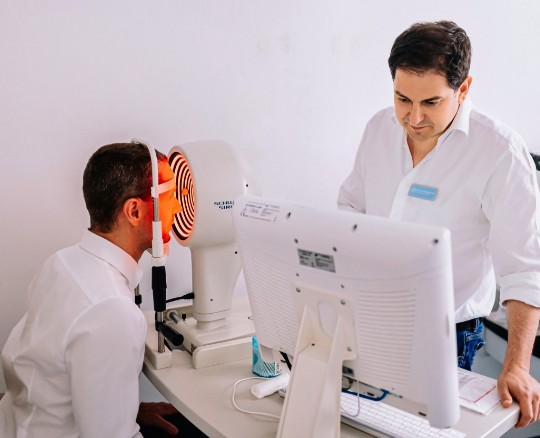Presbyopia is the age-related need for reading glasses
- You can correct this common visual error with our ultra-precise Swiss-optmised eye treatments
Discover why your reading vision gets worse as you age





Laser eye surgery in Zurich with leading Lasik surgeons: Gain visual freedom with our method for exceptional laser eye surgery.
Discover everything you need to know about presbyopia and how we treat it below
Choose the option below that sounds most like you to discover your best treatment

After 40, most of us need reading glasses (even if we’ve never needed glasses before!) Freedom from reading glasses is possible but not everyone’s eyes can be treated. Book an assessment below to find out if you’re suitable for reading glasses treatment:
We are proud to be associated with top quality private medical insurance



Discover our laser eye surgeons in the heart of Zurich

Things like age, eye shape, history and lifestyle make an eye treatment perfect for one person, but not another. Find out which treatment (if any) could free you from glasses and contacts
Take a quiz